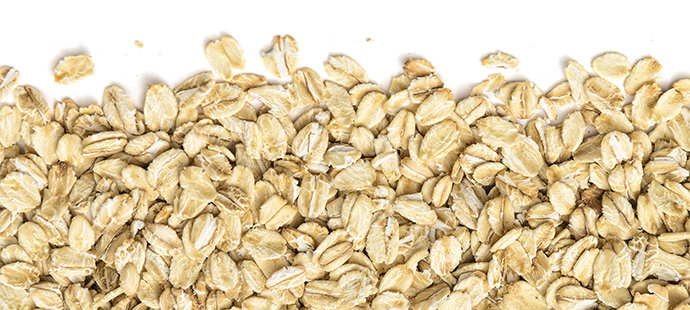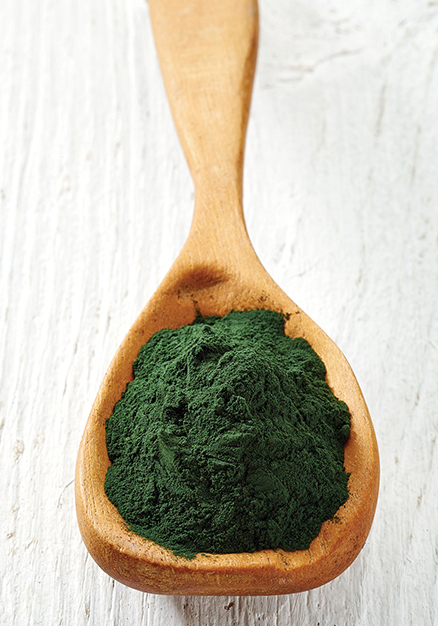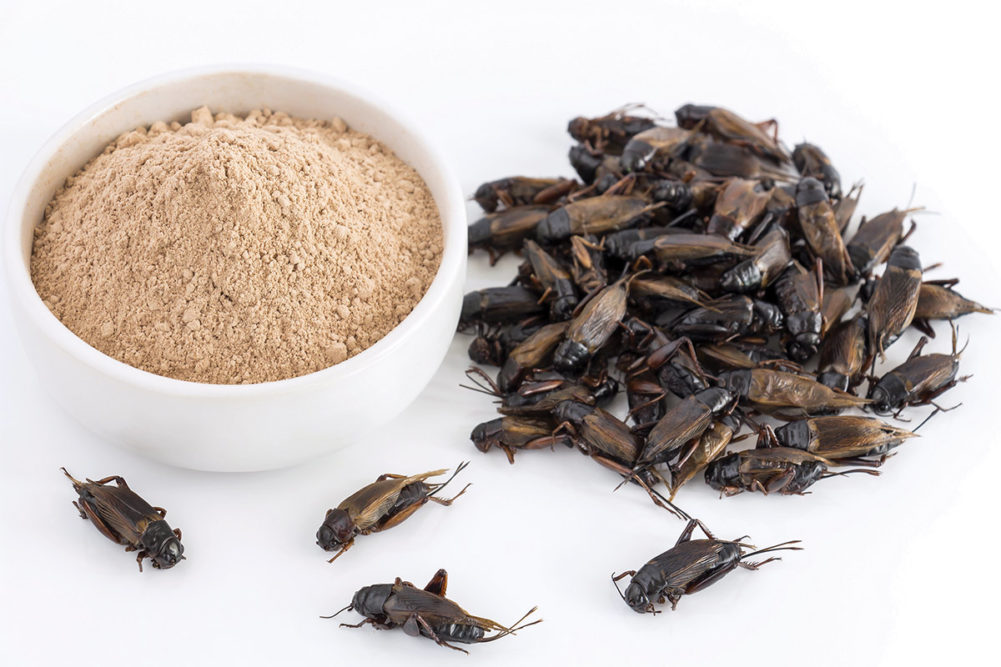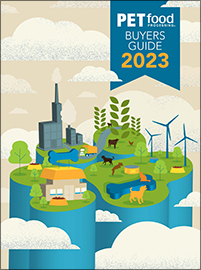This article was published in the June 2021 issue of Pet Food Processing. Read it and other articles from this issue in our June digital edition.
How to balance speed with a complete review? That is the test regulatory agencies face when approving new pet food ingredients and, unfortunately, a reason some safe products that could advance pet health and nutrition sit on the shelf for years.
Whether through a federal assessment by the US Food and Drug Administration’s (FDA) Center for Veterinary Medicine (CVM) or through the new animal food definitions procedure for adoption into the Association of American Feed Control Officials’ (AAFCO) Official Publication, new ingredients for pet foods are thoroughly reviewed before they can be used in commercially manufactured pet foods and treats. The American Feed Industry Association (AFIA) closely tracks progress through both the CVM and AAFCO processes as companies work to bring new products that can help pets live longer, healthier lives into the marketplace.
 AAFCO recognized oat fiber in 2019, which brings the benefits of beta-glucans to pet formulas. (Source: ©WABENO - STOCK.ADOBE.COM)
AAFCO recognized oat fiber in 2019, which brings the benefits of beta-glucans to pet formulas. (Source: ©WABENO - STOCK.ADOBE.COM)
In 2016, the Institute for Feed Education and Research (IFEEDER) commissioned a study to better understand the economic impact the industry is facing from the lengthy and cumbersome federal regulatory approval process. The study confirmed that, on average, it takes three to five years for a new animal food ingredient to move through the FDA’s review and approval process, causing companies to lose $1.75 million annually and slowing access to ingredients that benefit pet nutrition and health.
The American Feed Industry Association (AFIA) has spent several years trying to change this. In 2018, the AFIA worked with a coalition to urge Congress to change the Animal Drug and Animal Generic Drug User Fee Amendments, allowing the use of foreign data in ingredient submissions and creating a mechanism by which AAFCO could recognize new ingredient definitions. In 2020, the AFIA also supported additional federal funding for the FDA’s CVM approval office, which resulted in the hiring of 12 new ingredient review staff to speed up its review process. These incremental changes will reduce the time companies must wait for their ingredient reviews to be completed and allow the US pet food industry to stay on-par with its international counterparts.
More than 500 safe and nutritious ingredients are used in pet food today, demonstrating the diversity of options available to shoppers to fit their budgets and pets’ nutritional needs. (Source: IFEEDER, “Pet Food Production and Ingredient Analysis,” March 2020)
For years, companies have struggled to move ingredients through the CVM review process and into the marketplace – a struggle that has placed the US feed industry at a competitive disadvantage globally. Now, building on the momentum of the new staff positions at the CVM, the AFIA is taking its outreach a bit further to bring more clarity to the CVM ingredient and label claims review process.
As the science on animal nutrition evolves, the AFIA is calling for the CVM to modernize its policy for regulating claims regarding new animal food ingredients and novel uses. This long overdue update to the FDA’s regulatory review process would remove barriers to marketing innovative solutions that improve pet and livestock nutrition. Commercial access to new ingredients is an important step to promote pet health and longevity.
The AFIA is a member of the Food and Agriculture Climate Alliance (FACA), a broad coalition of agricultural stakeholders formed to address the positive role of food and agriculture to address climate change. The association is also working with the National Grain and Feed Association, the Pet Food Institute and several animal agriculture associations to convey the broad desire to the CVM for the modernization of its policy to impact animal health, wellbeing, food safety and the environment. With these partners, the AFIA is encouraging the CVM to recognize the value of new technologies to develop animal food ingredients for promoting pet growth and wellbeing.
“So much has been learned about the impact that food has on animal wellness. It is time for US regulatory policy to allow the use of this scientific knowledge to improve the lives of our pets,” wrote Louise Calderwood, American Feed Industry Association.
So much has been learned about the impact that food has on animal wellness. It is time for US regulatory policy to allow the use of this scientific knowledge to improve the lives of our pets.
The CVM will undoubtedly need more staff to assess new products if the review process is modernized. The association is working with our partners to bring more federal resources to the CVM to meet the anticipated increased demand for ingredient reviews.
In addition to the CVM process for reviewing ingredients, new animal food definitions can be adopted and printed in the AAFCO Official Publication. Additions to the AAFCO listing of Feed Terms and Definitions in the Official Publication require a safety review and opinion by the CVM, agreement from the AAFCO Ingredient Definitions Committee, and passage by the full AAFCO membership before adoption. While it is possible for new ingredients to move through the AAFCO review process in about a year, it normally takes longer.
 Black soldier fly larvae for adult dog foods is expected to receive AAFCO acceptance this year. (Source: ©NAMSOM1988 - STOCK.ADOBE.COM)
Black soldier fly larvae for adult dog foods is expected to receive AAFCO acceptance this year. (Source: ©NAMSOM1988 - STOCK.ADOBE.COM)
Notable progress
A recent example of a new definition is the AAFCO recognition of oat fiber in 2019. Some grains, such as barley and oats, contain a special type of soluble fiber called beta-glucan, which has been shown in numerous human studies to fight heart disease and diabetes. Beta-glucan may also be beneficial for pets to control blood glucose and prevent obesity. Adding oat fiber to pet diets is one way that pet food manufacturers could address the rising incidence of pet obesity.
In part due to improved nutrition, dogs are living to older ages and spending longer periods in the senior stages of their lives. These older dogs have different nutritional requirements than younger animals and age-related dietary formulations can help reduce health issues, such as a decline in cognitive function. AAFCO recently approved marine micro-algae, an ingredient rich in omega-3 fatty acids, which has been shown to help support the health of aging dogs. The new ingredient offers a sustainable and cost-effective alternative to fish oil and may support brain function in older dogs in addition to providing other nutrients important for maintaining the health of senior pets.
 Senior dogs can now benefit from the omega-3 fatty acids in recently approved marine micro-algae. (Source: ©BAIBA OPULE - STOCK.ADOBE.COM)
Senior dogs can now benefit from the omega-3 fatty acids in recently approved marine micro-algae. (Source: ©BAIBA OPULE - STOCK.ADOBE.COM) In Europe, several companies have launched insect-based pet diets formulated with black soldier fly larvae (BSFL) and crickets. Some claim these ingredients rival the amount of protein in livestock sources and contain a wealth of beneficial nutrients. BSFL are especially high in calcium and crickets are a good source of taurine and amino acids. The AAFCO Ingredient Definitions Committee recently approved BSFL for use in adult dog foods and AAFCO membership will vote on acceptance of the ingredient this summer.
Not all the reviews by AAFCO are for new, innovative products, but nonetheless, they support the fundamentals of pet nutrition. For example, taurine has long been known to be an essential amino acid for cats. Found in animal-based proteins, taurine is critical for normal vision, digestion, heart muscle function, to maintain normal pregnancy and fetal development, and to maintain a healthy immune system. This well-known building block for feline health is now available for use in fish feed, after AAFCO updated its definition in 2019.
As our understanding of health and nutrition continues to progress, pet food manufacturers and ingredient suppliers are constantly developing new products that support longer, healthier lives for dogs and cats. It is critical that we have a credible regulatory structure that keeps pace with advances in science, so that we can continue delivering beneficial products to pets at home and abroad.
by Jennifer Semple
Pet foods and treats containing hemp-derived ingredients are on the rise, despite the fact that these ingredients are currently lacking regulatory approval.
Looking at trends in pet specialty sales for all products with hemp-CBD claims including pet food, pet treats, supplements, grooming products, and other related goods, NielsenIQ reported total sales for CBD pet care products in 2020 grew 50.5% to $11.7 million, with an average price per lb of $37.73.
The current federal regulatory status of these ingredients last updated by the Association of American Feed Control Officials (AAFCO) in April 2019 states that the US Food and Drug Administration (FDA) has regulatory authority over food products; and hemp and hemp products may not be used in animal feed or pet food in the United States. It also states that the 2018 Farm Bill did not grant the right to use hemp and hemp products in food for humans or animals. Luckily for brands selling these products, many states have passed or are considering legislation to support the use of hemp in commercial animal food.

The proliferation of pet food and treats containing hemp ingredients has exposed the great divide between federal and state oversight of animal food ingredients as well as the extremely slow regulatory approval process for new animal food ingredients. There are, however, a few small signs of progress.
“Recently, the Hemp Feed Coalition applied to AAFCO and the FDA CVM [Center for Veterinary Medicine] for the consideration of hemp seed meal and cake to be fed to laying hens,” said Louise Calderwood, director of regulatory affairs, American Feed Industry Association. “This first step was several years in the making, requiring the coalition to gather the necessary data for its submission package to prove the ingredient is safe for use.”
Also, at the end of 2019, Congress passed a budget that provided the FDA with funding to support efficiencies for animal food ingredient reviews. The $5 million allocation from appropriators will allow the FDA’s CVM to nearly double ingredient review staff. David Edwards, Ph.D., director of the division of animal feeds, FDA CVM, said the agency anticipates a direct impact on ingredient approval from this added staff.
“This gives us the opportunity to work on pre-market submissions where we review things such as food additives or generally recognized as safe substances. It gives us the opportunity not only to make those reviews more consistent, which will help out industry, but also once we get those people trained it will give us an opportunity to shorten our review time.”
As the regulatory entities in the industry ever so slowly address hemp-derived ingredients for use in animal feed and pet food, brands and manufacturers aren’t waiting for “official decisions” as consumers embrace products and return a price per pound that makes investors’ tails wag.
For more regulatory news affecting the pet food market, visit our Regulatory page.




